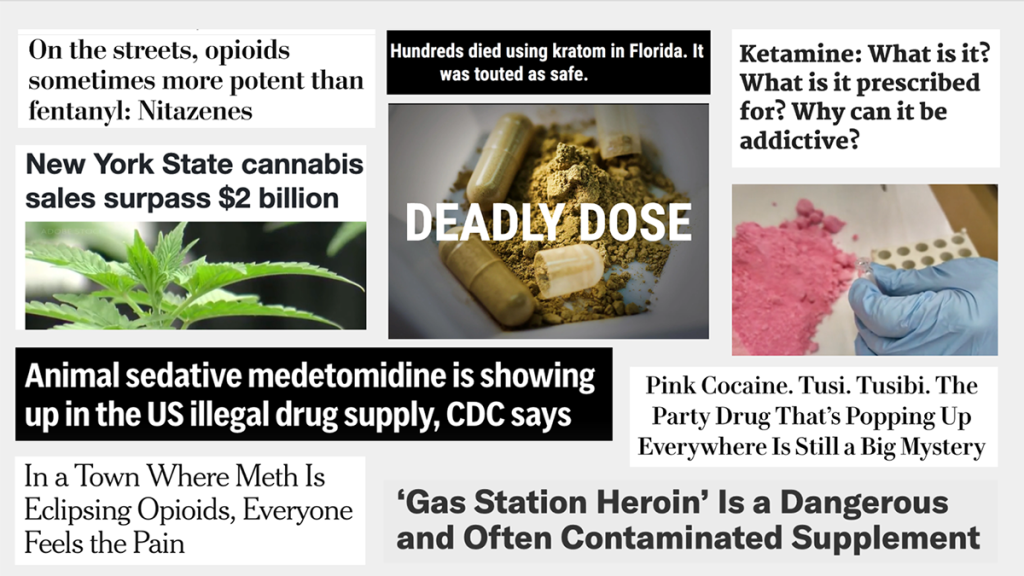
Image: Susan Stellin
Covering the drug supply, risks and trends
Educating readers, listeners, and viewers about drugs, risks, and their effects — without overstating threats
Here’s a quiz: how many different drugs can you name? Seriously, take a minute and think about your answer. When I’ve asked this question during training workshops, people usually come up with 5-10 different drugs before giving up or starting to get restless.
Then I show a slide featuring this graphic:
![The Drugs Wheel [thedrugswheel.com] by Mark Adley, Guy Jones & Michael Linnell is licensed under a Creative Commons Attribution-NonCommercial-ShareAlike 4.0 International License.](https://rjionline.org/wp-content/uploads/sites/2/2025/10/stellins25100603-1-801x1024.jpg)
It’s helpful to illustrate not only the wide range of drugs that exist, but also the main categories typically used to classify substances, such as stimulants, psychedelics, opioids, or cannabinoids.
Noting that some drugs fit into more than one category, The Drugs Wheel creators explain, “The Drugs Wheel is a model and doesn’t aim to list every drug on the market or describe every drug’s effect. Its goal is to simplify the drug landscape.”
It was originally developed in the UK and there are different versions for other countries, including one by the Alcohol and Drug Foundation in Australia that places seven drug categories in the center of the wheel, with their effects in the middle ring and commonly used substances in the outer ring.
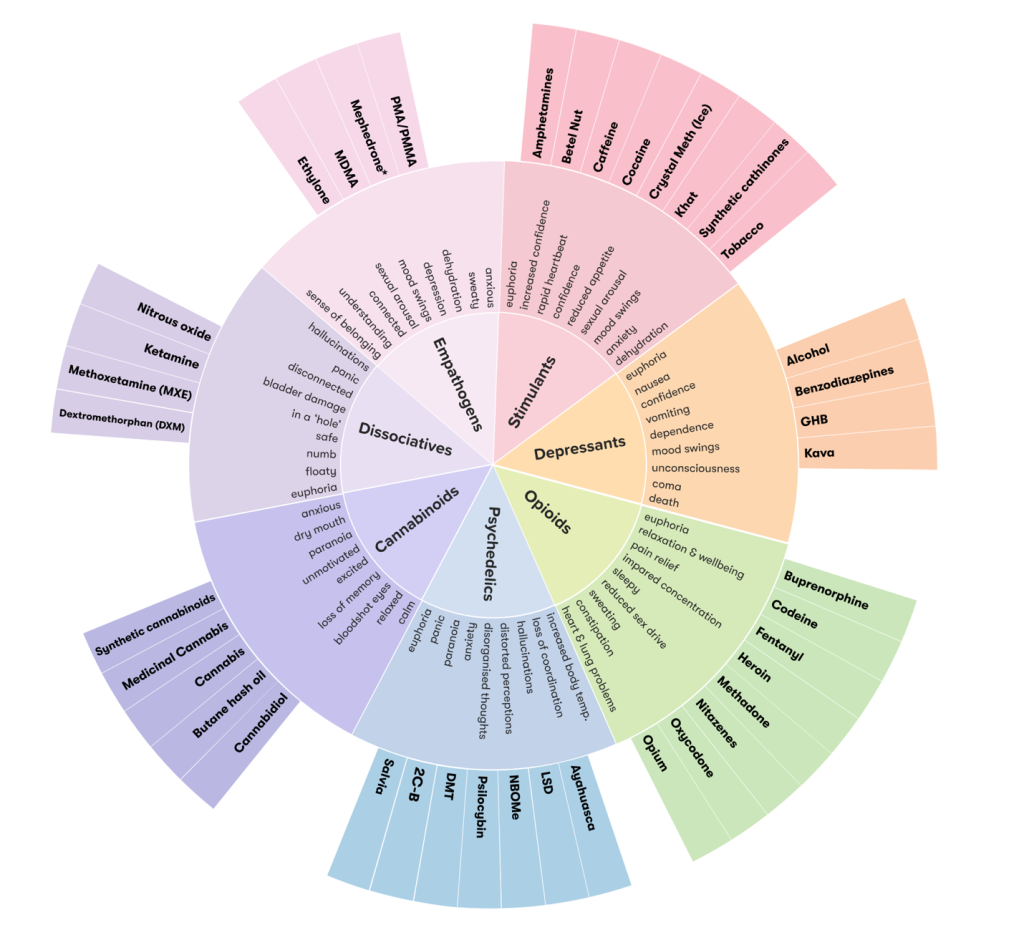
Drug types and effects
The ADF version is interactive, so people can click on different drugs like cannabis, fentanyl, or ketamine, and read more about each one’s appearance, use, effects, withdrawal symptoms, etc. (The full list of drugs included is here.)
I haven’t found a resource in the U.S. that’s similarly clear, well-designed, and comprehensive – please contact me if you have suggestions. For journalists looking for background information or a place to link to more details about drugs mentioned in articles, here are a few U.S.-based options:
- The National Institute on Drug Abuse (NIDA) hosts a Drugs A to Z guide, which “gives basic information on drugs with addictive potential, including how they are used, how they make people feel, and their health effects, including risk for substance use disorder.” At the end of the initial description for each drug, there are links to additional information, such as NIDA research on the health effects of methamphetamine or kratom. Those detailed pages tend to be more helpful.
- The Drug Enforcement Administration (DEA) has a drug index designed for parents, educators, and caregivers, but the descriptions of each drug are pretty limited. The DEA’s Drugs of Abuse 2024 guide is a long document describing different drugs, their origins, and effects in more detail, with photos.
- Drugs.com offers information about more than 24,000 prescription drugs and over-the-counter medications, including drugs that are sometimes misused or increase overdose risks, like Percocet or Xanax. It also offers descriptions of treatments for opioid use disorder like buprenorphine and methadone. With more people mixing prescription medications, alcohol, and illicit drugs, these summaries can help educate readers about potential interactions that can increase overdose risks.
Tracking drug trends
Journalists now have more options for learning about what’s in the drug supply, including what are known as novel (or new) psychoactive substances (NPS), which are synthetic drugs typically designed to evade legal restrictions. These sources rely on different surveillance methods to detect new drugs and adulterants and share this information with researchers and the public, often highlighting regional patterns.
Although the federal government is no longer collecting data through the Drug Abuse Warning Network (DAWN), which previously monitored emergency department visits related to substance use, historical reports are still available online. Here are some other sources tracking drug trends:
- The National Drug Early Warning System (NDEWS), a collaboration among researchers at the University of Florida, New York University, and Florida Atlantic University, gathers and shares real-time surveillance data about drugs. You can subscribe to the NDEWS weekly briefing, sent on Fridays, which covers news, articles, and data related to drug trends in the U.S. and globally. Recent newsletters have focused on kava and kratom tonics and MDMA (ecstasy).
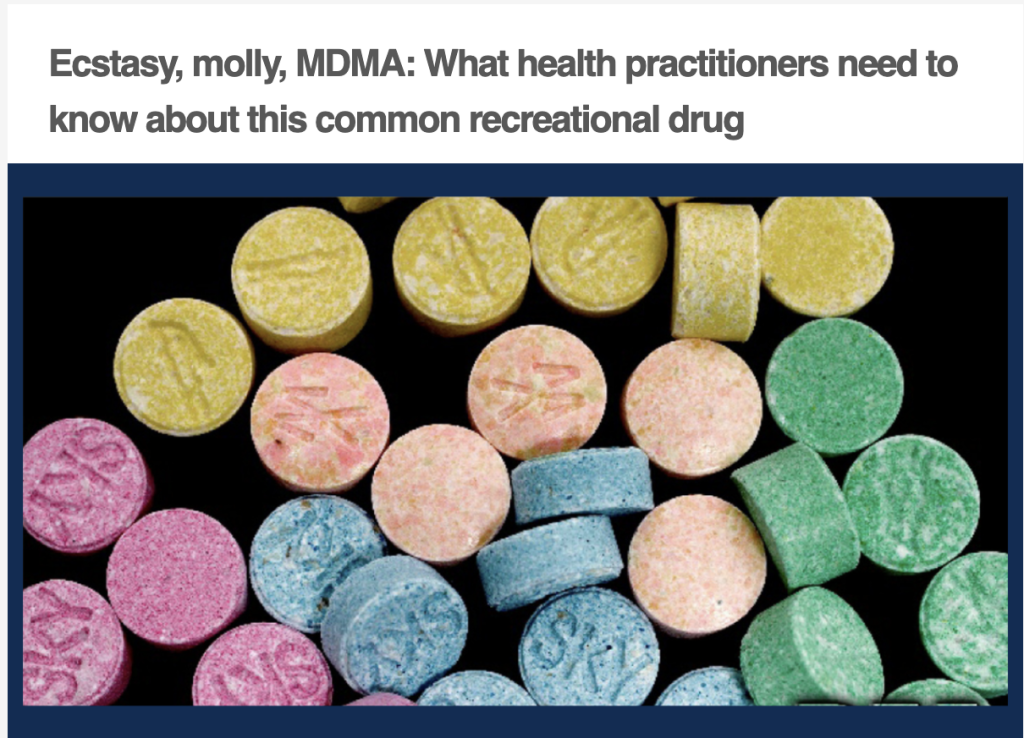
- The Opioid Data Lab at the University of North Carolina at Chapel Hill shares results from its drug checking service through a monthly newsletter that also highlights recent studies, drug policy developments, and relevant media coverage. For instance, the September newsletter linked to a report on the use of psychedelics in the U.S. and other research about what’s in the drug supply.
- The Center for Forensic Science Research and Education (CFSRE) publishes quarterly trend reports through its NPS Discovery program (sign up here). Although more technical than other sources, these reports include graphics showing which substances are appearing in forensic samples in the U.S., such as NPS benzodiazepines like bromazolam.
- The National Forensic Laboratory Information System (NFLIS) is a Drug Enforcement Administration program that collects information from drug cases analyzed by federal, state, and local forensic laboratories. It also collects data from toxicology labs and medical examiner and coroner reports. Journalists can download NFLIS bulletins and reports.
- The Millennium Health Signals Report offers insights based on results of the urine drug tests the company processes, over a million specimens a year. The reports highlight patterns such as regional variations in polysubstance use among people who test positive for fentanyl, with graphics that illustrate data.
Putting data in context
A common criticism of media coverage of drugs is that news outlets have historically sensationalized or misrepresented trends, fueling what are sometimes referred to as “drug panics.”
Researchers analyzing news stories about specific drugs have identified inaccurate or overblown coverage, as well as the consequences of using terms like “zombies”—most recently to describe people under the influence of the veterinary sedative xylazine.
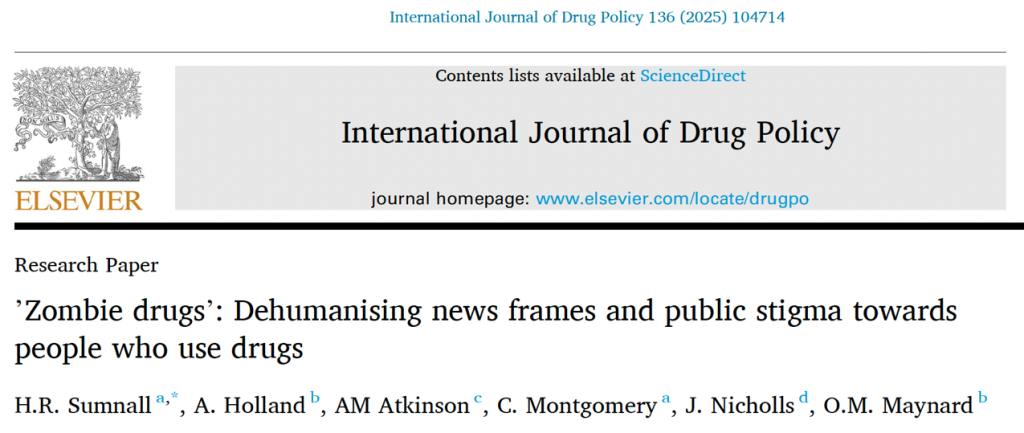
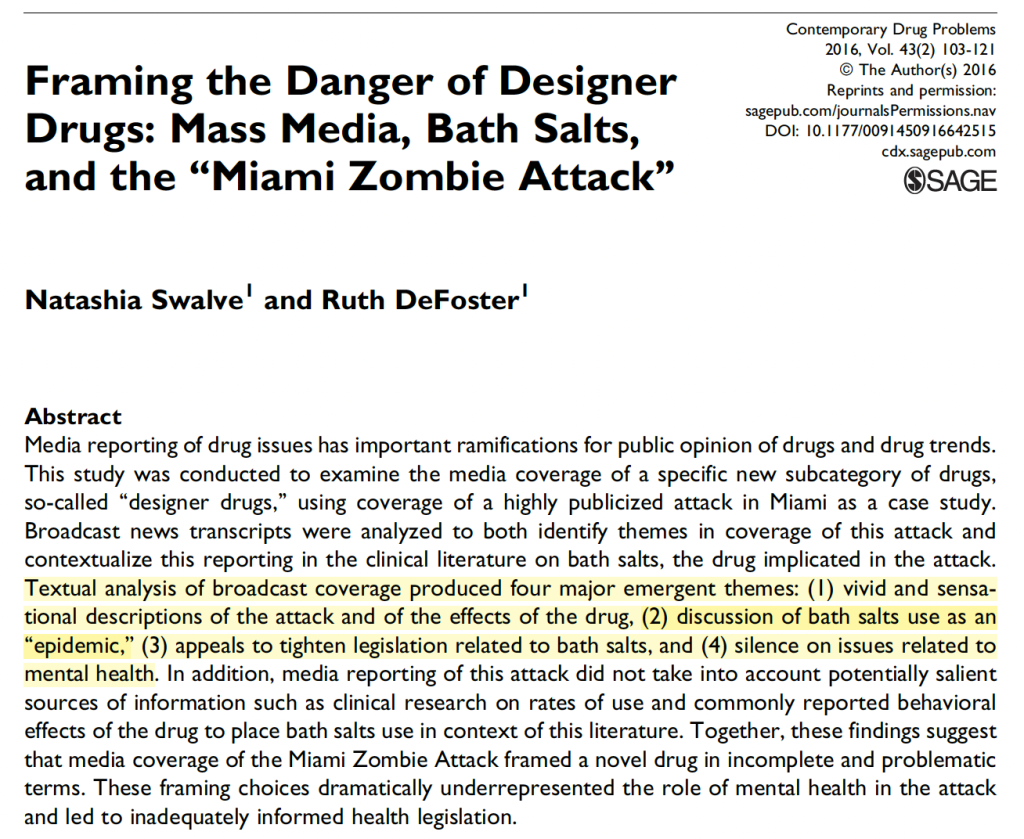
With the media landscape so fractured and social media so influential, it’s tough to generalize about news coverage of drugs, or design high-quality studies that can truly capture dominant themes. Of course there are still plenty of sensational click-bait stories about drugs, but I’ve also seen more nuanced reporting about emerging trends, like this 2023 Tampa Bay Times investigation of kratom-related overdoses in Florida.
But the advice WNYC’s On the Media program offered to listeners in 2017 is still a pretty good guide for journalists covering drugs, even with more potent, potentially lethal substances in the drug supply. As much as possible, resist hyperbolic headlines and television news teasers—and save the zombie metaphors for reviews of the latest streaming hit series.
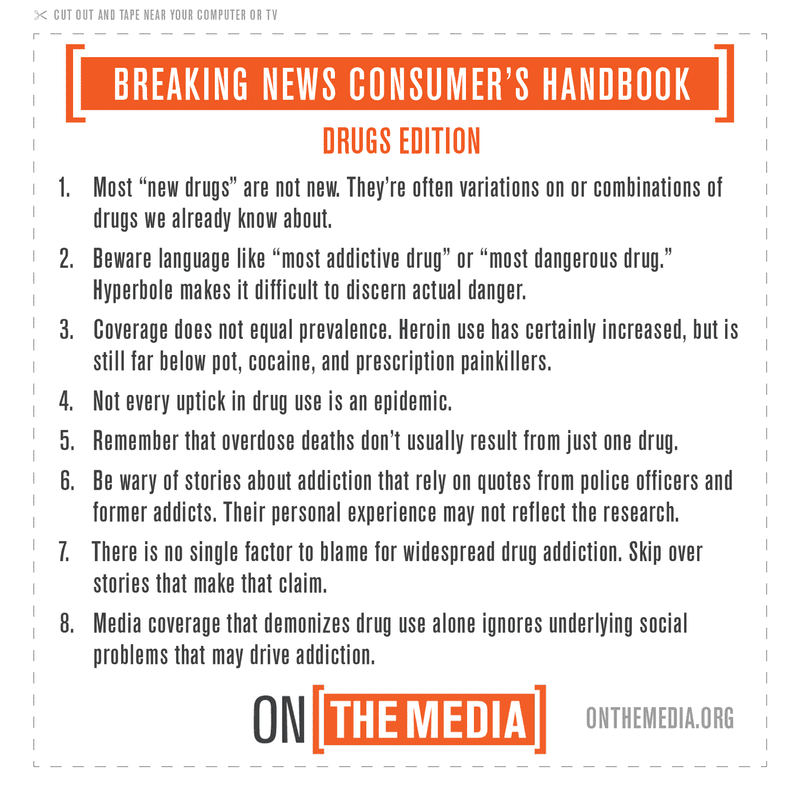
To sign up for email alerts when these monthly articles are published or offer feedback about the guide as it takes shape, you can fill out this form or click the link below.
I’m especially interested in finding out what questions or topics journalists would like to see included, including challenges reporters have encountered finding information or data. I also welcome suggestions from researchers, service providers, policymakers, advocates, and people personally impacted by substance use and addiction.
Cite this article
Stellin, Susan (2025, Oct. 6). Covering the drug supply, risks and trends. Reynolds Journalism Institute. Retrieved from: https://rjionline.org/news/covering-the-drug-supply-risks-and-trends/
